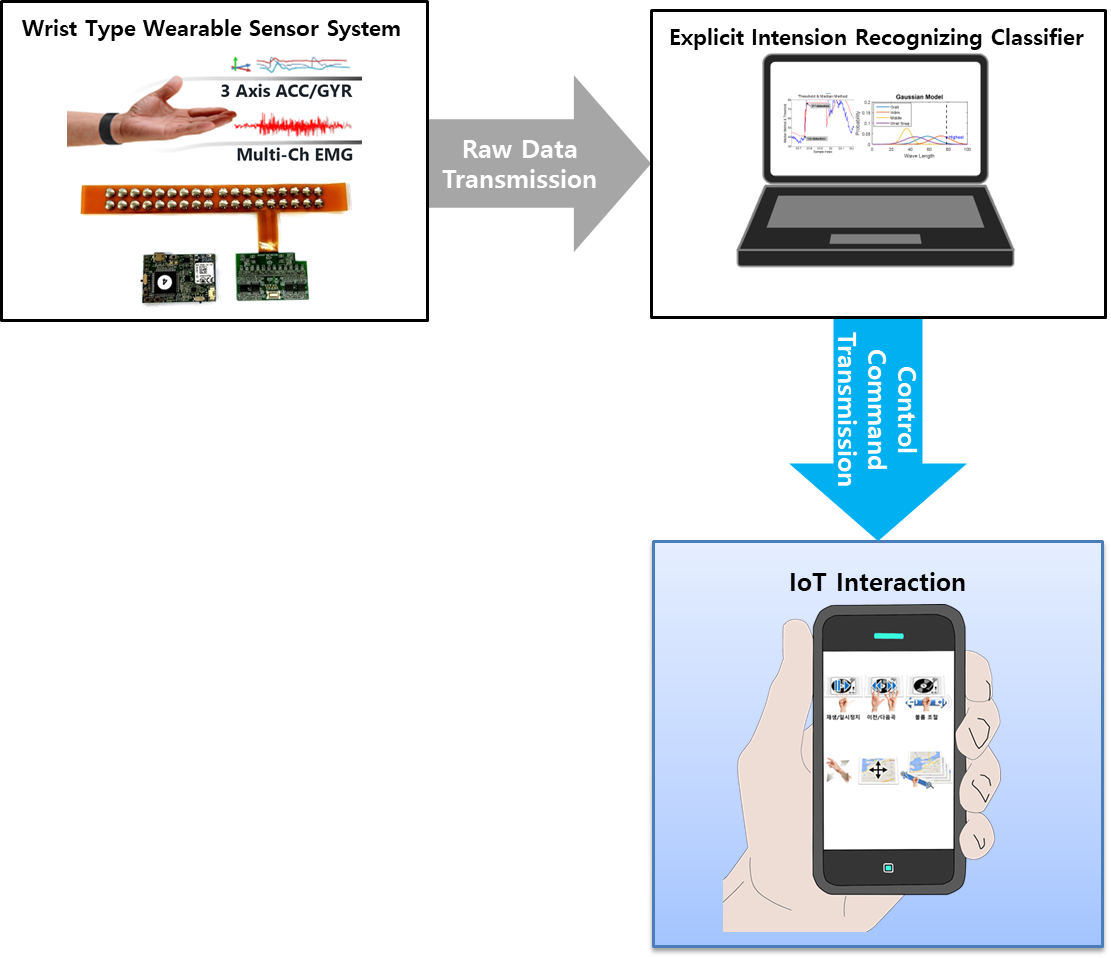Explicit Intention Recognition by Using Wrist-type Wearable Device
The project aims to develop a wrist-type wearable sensor system for IoT interaction.





Wrist Type Wearable Sensor System
- Development of Wrist Type Wearable Sensor Prototype
- Explicit Intention Recognition and Performance Evaluation Available
- Composed of 1 Sensor FPCB and 2 Board
- Main Board
- Composed of MCU, Kinematic Sensor Module, Bluetooth Communication Module, and so on.
- EMG Sensor Board
- Composed of pre-AMP, ADC Chip to Acquire the EMG Signal
- Sensor FPCB
- Composed of 20 Pair of Electrodes
- 2 Pair for Ground
- 16 Pair for EMG Aquisition
- Composed of 20 Pair of Electrodes
- Main Board
- Can Acquire 16 Channel EMG and 6 Axis Kinematic Data Simultaneously
- Sampling Rate: 1024Hz
- Acquired Data: Sent to Computer via Bluetooth Communication
- Explicit Intention Recognition and Performance Evaluation Available
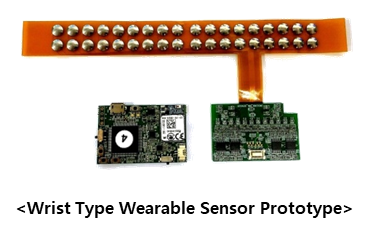
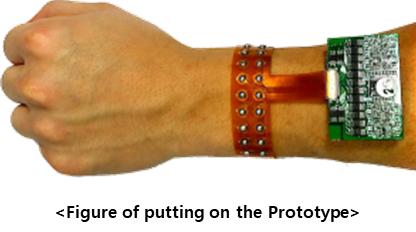
- Maximum Likelihood Estimation based Explicit Intention Recognition System
- Process

- Experiment Set Up
- Experiment Environment
- 6 Kind of Explicit Intention(Finger or Wrist Motion) Defined
- Focused on Availability and Necessity
- 30 Repetition for Each Explicit Intention
- Maintained for About 0.2 Second
- 6 Kind of Explicit Intention(Finger or Wrist Motion) Defined
- Experiment Environment

- Performance Evaluation
- Recognition Method
- Training Set: Randomly Selected 15 Trials for Each Intention
- Test Set: 15 Trials Which is Not Selected as Training Set
- Cross-validation is Used
- Gaussian Model based Maximum Likelihood Estimation is Used
- Result
- Shows 96.67% of Average Recognition Accuracy
- Recognition Method
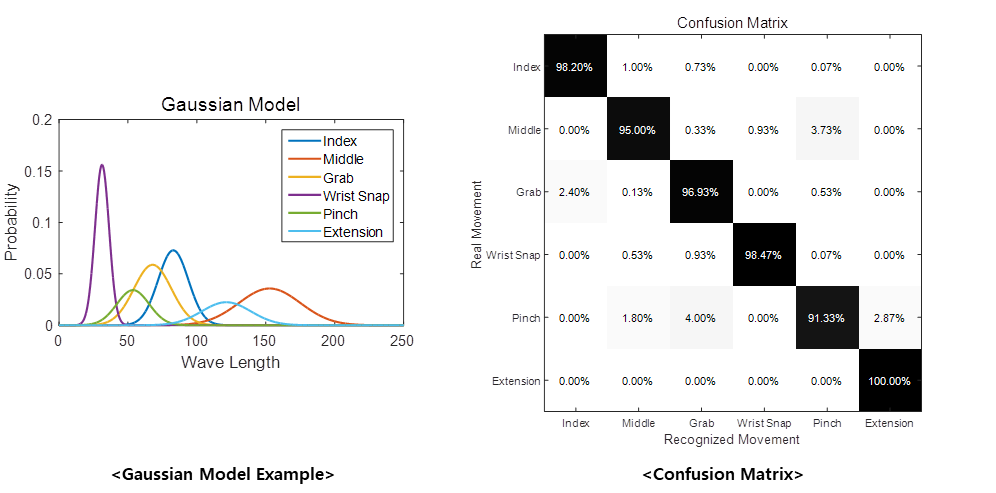
- Motion Duration Recogition Based Extrinsic Intention Recognition System
- Process

- Experiment Set Up
- Experiment Environment
- Motion Start: Holding Grab Motion
- Motion End: Changing Grab to Extension
- Recognize Time between Motion Start Point and Motion End Point
- 2 Different Motion is Used
- Short Motion: Duration Under 0.5 Second
- Long Motion: Duration Over 1 Second
- Experiment Environment

- Performance Evaluation
- Do Not Need Training
- Selected Answer Section by using Accelerometer Data from Finger
- Identified the Time Error by Comparing Answer Section and Recognized Section (△e_1& △e_2 in the figure below)
- Motion Duration Time Recognition Method
- Result
- Short Motion: Occurs Average 0.08 Second of Duration Time Error
- Long Motion: Occurs Average 0.14 Second of Duration Time Error

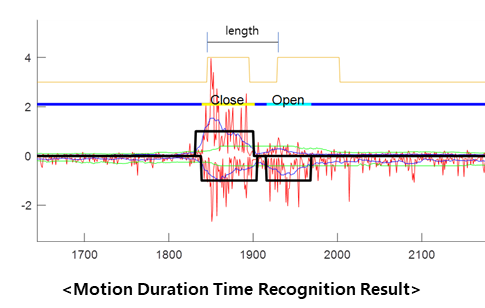
IoT Interaction
- IoT Device Control System
- Transmit the Acquired Data from Wearable Device to Computer
- User Intention Recognition on Computer
- Control PC Software
- Google Map
- Media Player
- Control IoT Device
- Smart Bulb
- Smart Door Lock
- Smart Switch
- Smart Temperature Control System
- Smart Device Control System based on Wrist Type Wearable Device
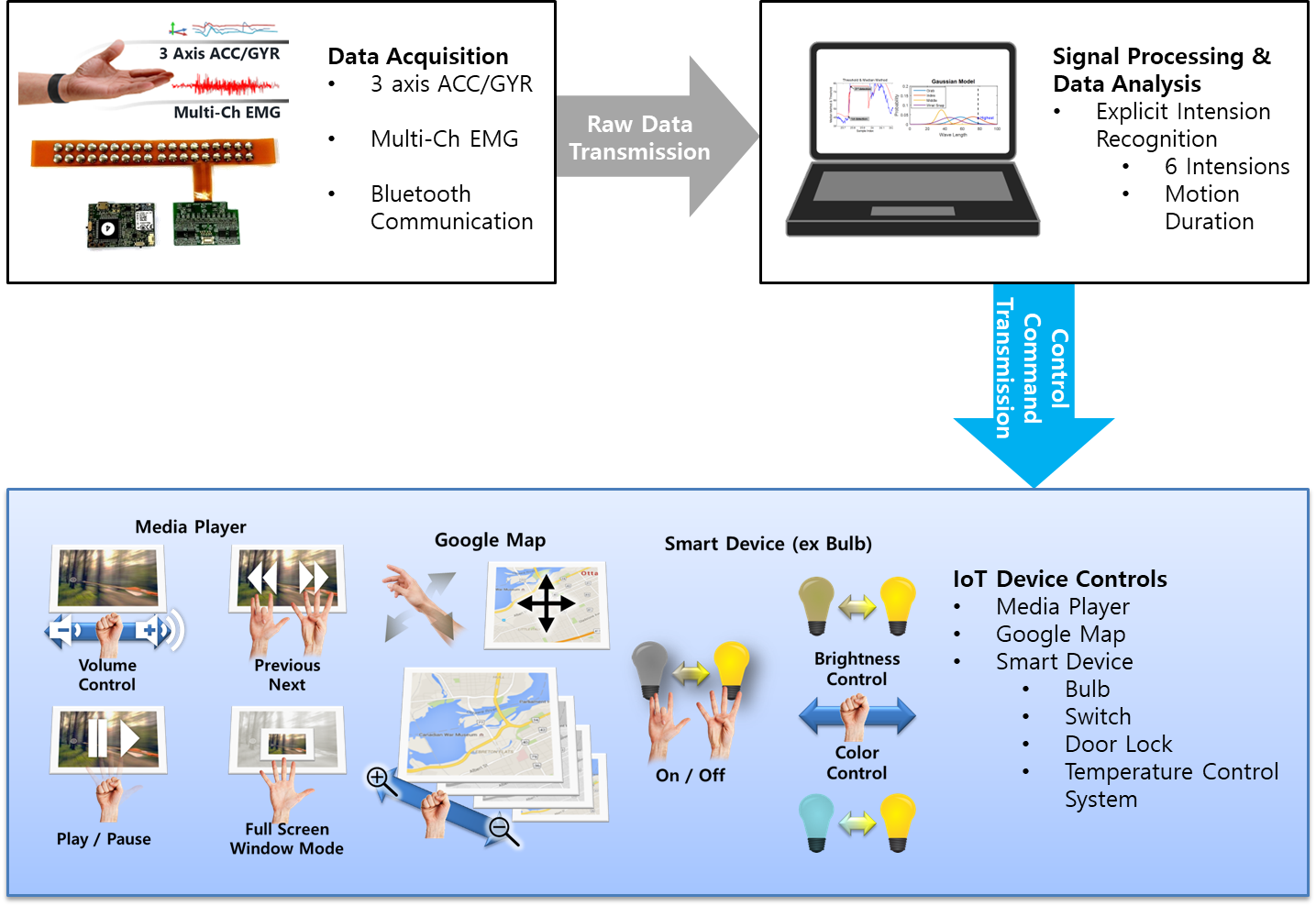
Explicit Intention Recognition by Using Wrist-type Wearable Device
Introduction
- The project aims to develop a wrist-type wearable sensor system for IoT interaction.
- To achieve the goal of the project, we develop wrist-type wearable sensor prototype which records multi-channel EMG and 3 axis accelerometer and gyroscope.
- Data from the wrist-type wearable device is transmitted to computer by bluetooth communication module.
- The various signal processing and data analysis including explicit intention recognition is progressed on computer.
- Control command correspond to the recognized explicit intention is sent to various smart devices.
- IoT interaction by using the control command is the final goal of the project.
